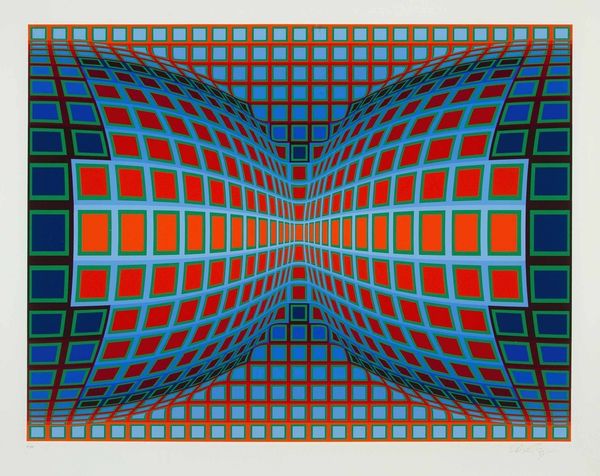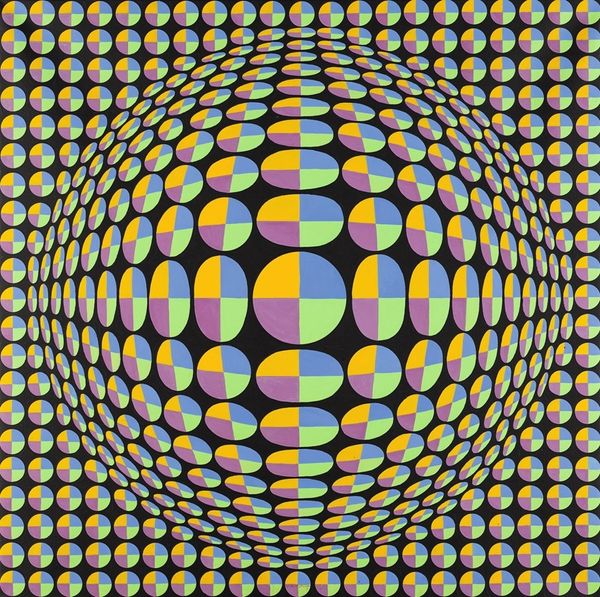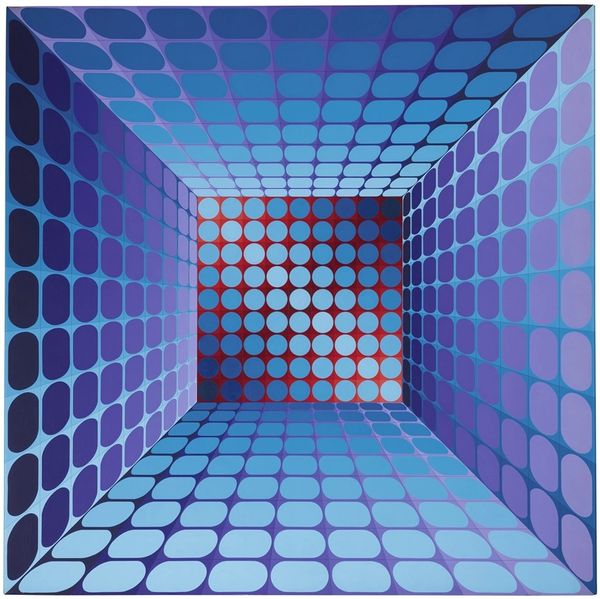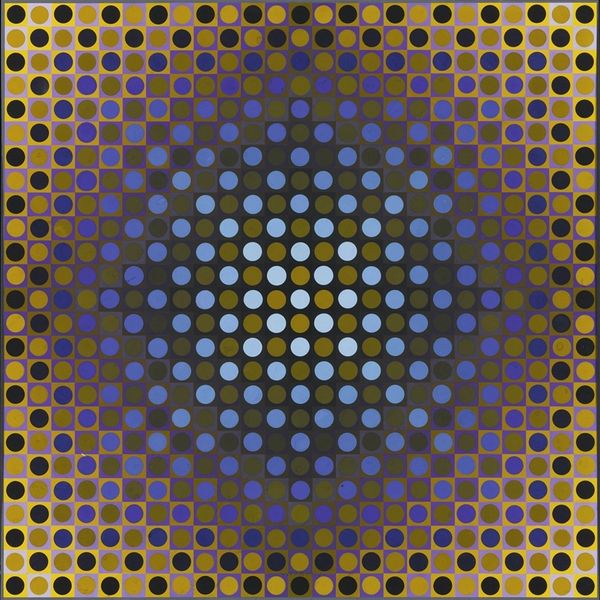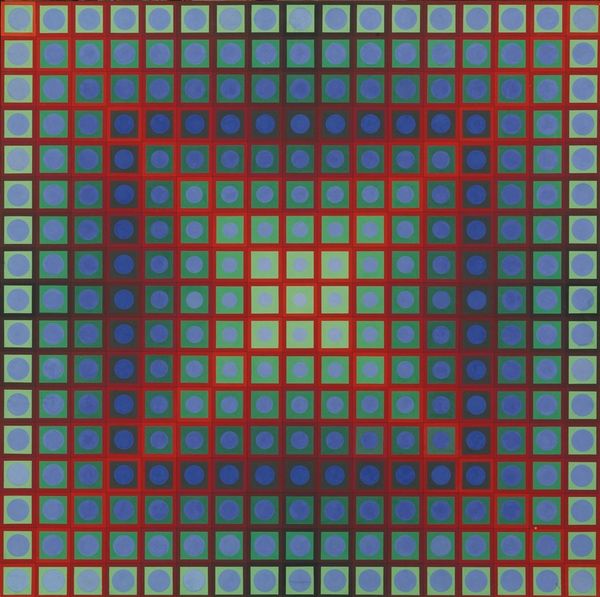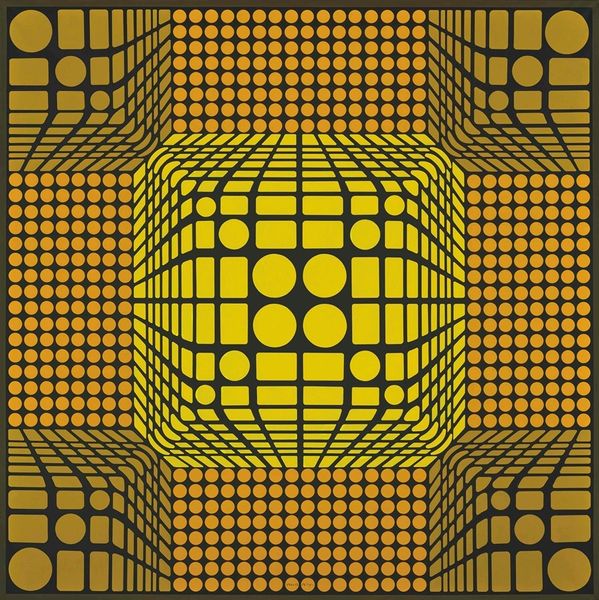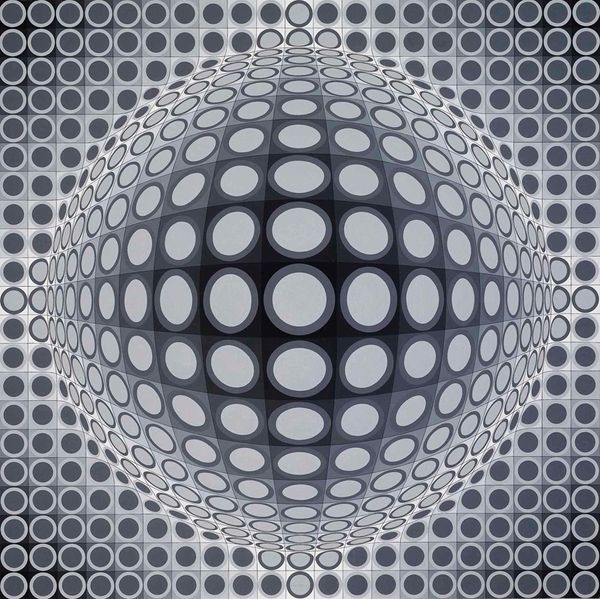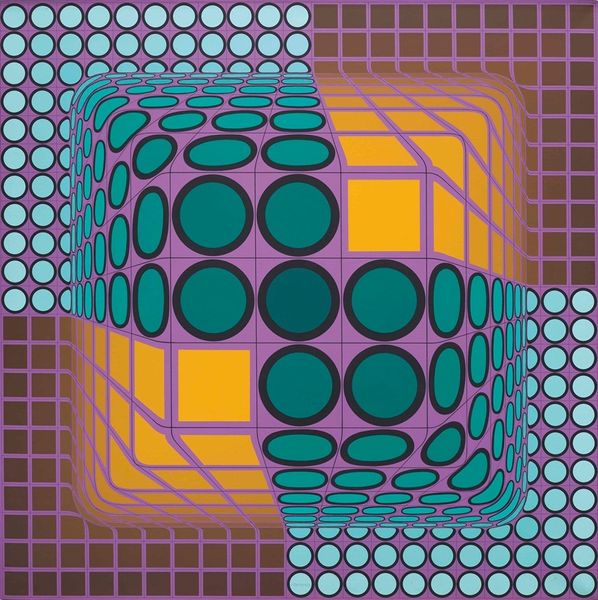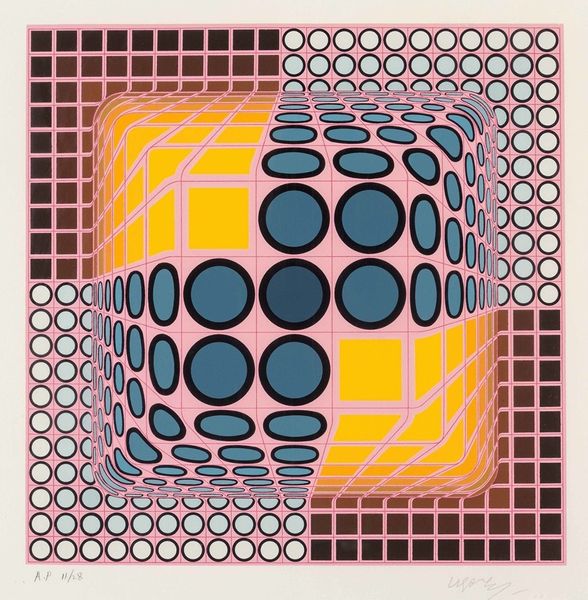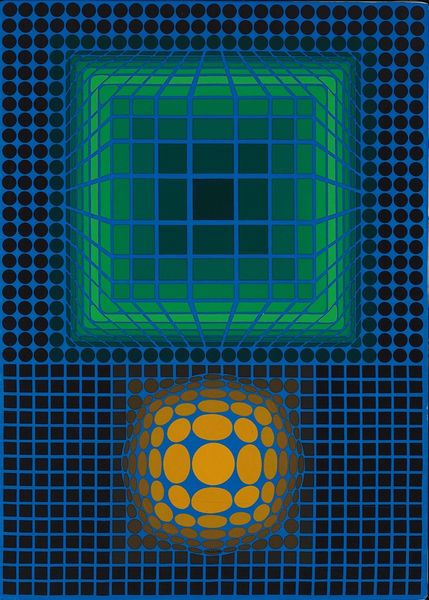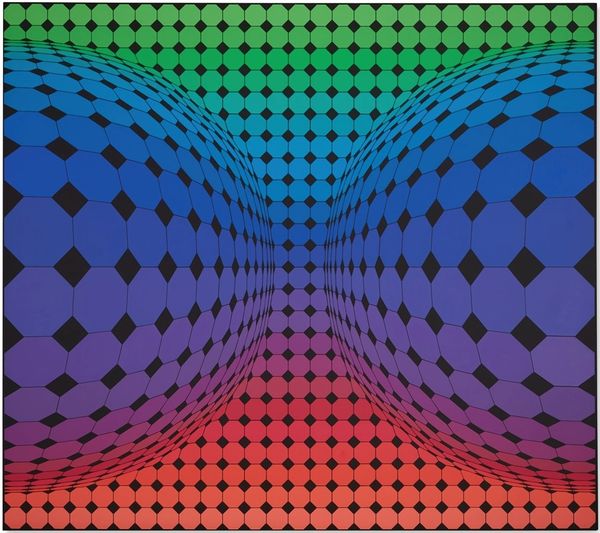
acrylic-paint
#
op-art
#
postmodernism
#
acrylic-paint
#
geometric
#
geometric-abstraction
Copyright: Modern Artists: Artvee
Curator: Victor Vasarely’s “Miche,” from 1989, uses acrylic paint to generate a dazzling optical effect. Editor: My first impression is that it's quite unsettling! The optical illusion really throws off my sense of space. There’s a definite sense of the uncanny valley with such bold geometric form. Curator: Exactly. The piece exemplifies Op Art, doesn't it? Look at how Vasarely manipulates our perception through a meticulous arrangement of squares. The chromatic intensity, combined with geometric form creates a spatial tension, suggesting movement where there is none. Editor: I'm immediately drawn to the central, yellowish-green area. Doesn't that feel almost like an icon? Perhaps even a stylized sun disc—something almost primordial about that top section as if it is a light that’s piercing the earth. It does invite this association. The grid morphing toward this epicenter makes me think of transformation, an unraveling toward this vital center. Curator: While I acknowledge that associations like those are certainly *available*, it is imperative to recognize that Vasarely often focused on pure form, spatial dynamism and the effect of colour combinations on the viewer's eye. The grid, as you call it, is not necessarily morphing toward anything, but operating within a tightly calibrated schema. Note the changes in colour from the red outer section toward the browns. The colour supports this sense of a void opening up. Editor: Yes, it’s fascinating how that grid generates that sinking sensation. And the color choices add a sense of heat and earthy depths which is quite impactful to the symbols inherent to the image. Brown evokes groundedness, while yellow and red together certainly carry an intensity reminiscent of a fiery, life-giving presence. The careful consideration here reveals so much beyond just shape and placement; it's emotional! Curator: The arrangement creates the illusion of depth. By adjusting colour and placement, Vasarely forces a reaction from the human optic nerve that’s hard to deny, regardless of perceived emotional impact. Editor: Even if his intention was pure visual effect, this still points toward very primal symbology when observing from any critical point. It is hard not to look into that core essence! Curator: Yes, and whether interpreted as a formal experiment or a symbolic map, "Miche" remains a striking engagement with perception. Editor: A compelling piece indeed, forcing one to consider not only what is seen, but what is felt, whether Vasarely intended for the viewer to travel there, or not!
Comments
No comments
Be the first to comment and join the conversation on the ultimate creative platform.

